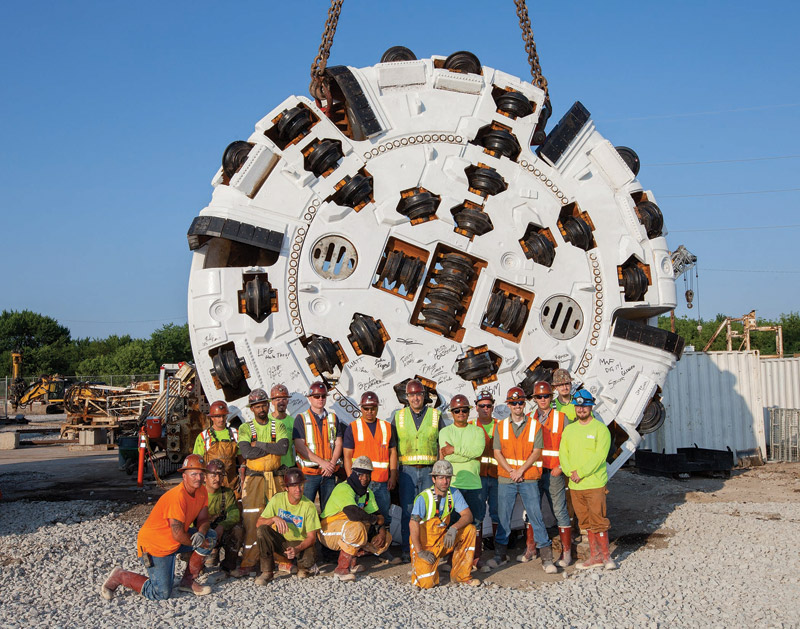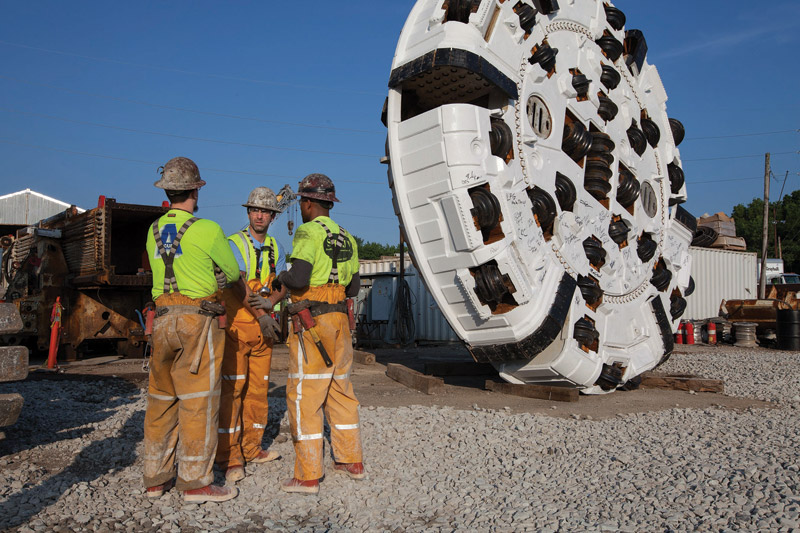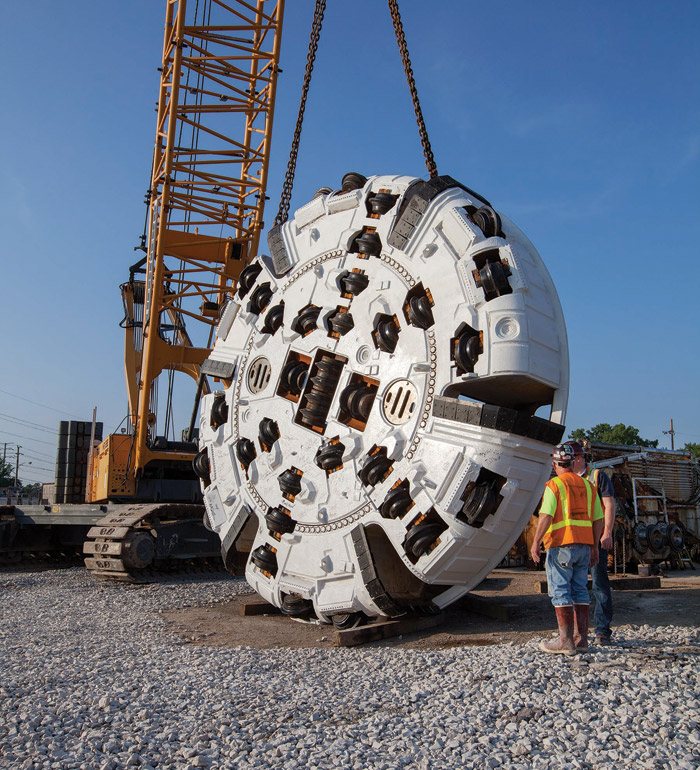Venerable TBM launches on White River Tunnel project
30 September 2016USA - A 6.2m-diameter Robbins TBM was launched by the Shea-Kiewit JV on the White River Tunnel project. The 8.5km drive through limestone and dolomitic rock is part of the DigIndy wastewater tunnels complex being constructed below Indianapolis. The parent project comprises 28km of tunnelling.
The machine was previously used on the project’s main tunnel, the Deep Rock Tunnel Connector (DRTC). However the DRTC was far from the TBM’s first job. A Robbins spokesperson elaborated: “The machine, originally built in 1980, has been used on New York City’s Second Avenue Subway, as well as projects in Massachusetts and Canada. Once the machine has completed the DigIndy network of tunnels, it will have bored more than 51km of tunnel—an achievement making it one of the hardest working Robbins TBMs ever put into service.”
The TBM was launched from a 67m deep shaft following refurbishment that included new motors, gearboxes and electronics. As of the end of September, the machine had bored over 300m. About one mile into the White River Tunnel, the drive will bifurcate eastwards to bore the 2.7 km Lower Pogues Run Tunnel in front of Lucas Oil Stadium in downtown Indianapolis. The machine will then be backed up to the bifurcation point before continuing north for completion of the White River Tunnel.
The S-K JV has until 2021 to complete the White River and Lower Pogues Run tunnels for local owner Citizens Energy Group, and until 2024 to complete all the tunnels. The use of one TBM was seen as a positive: “The use of one machine was more efficient for our crews. The schedule allowed us to run with one TBM and we feel we can do it with one machine. It also was a less costly option than running two machines in terms of the owner funding the project,” said Dan Martz, vice president for J.F. Shea. Once complete, the EPA-mandated deep tunnel project will reduce the amount of raw sewage overflows and clean up tributaries along the White River.
Mucking will be carried out by continuous conveyors that will have to navigate 300m radius curves as the tunnel follows the path of the White River.



